

Houseplant
A houseplant is a plant that is grown indoors in places such as residences and offices. Houseplants are commonly grown for decorative purposes, positive psychological effects, or health reasons such as indoor air purification. Plants used in this fashion are most commonly, though not always, tropical or semi-tropical.[1]

![]() A variegated cultivar of Sansevieria trifasciata (namely ‘Laurentii’), a common houseplant
A variegated cultivar of Sansevieria trifasciata (namely ‘Laurentii’), a common houseplant
Contents |
Plant requirements
Major factors that should be considered when caring for houseplants are moisture, light, soil mixture, temperature, humidity, fertilizers, potting, and pest control. The following includes some general guidelines for houseplant care. For specific houseplant needs, the tags that sometimes come with plants are notoriously unhelpful and generic. Specific care information may be found widely online and in books.
Moisture
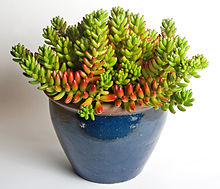
![]() Succulents or water-retaining plants, such as this Jelly Bean Plant (Sedum rubrotinctum) are often grown as Houseplants
Succulents or water-retaining plants, such as this Jelly Bean Plant (Sedum rubrotinctum) are often grown as Houseplants
Both under-watering and over-watering can be detrimental to a houseplant. The best way to determine whether a plant needs water is to check the soil moisture. Feeling the soil is most reliable, since moisture meters are often inaccurate. Most potted plants must be allowed to reach an appropriate level of dryness in between waterings, though the amount of watering required varies greatly depending on the species. Proper soil moisture can range from still slightly moist on the soil surface to very dry to nearly the bottom of the pot. Watering a plant by the calendar is not recommended. If a plant does need to be watered, water should be slowly poured over the surface of the soil until it begins to drain out the bottom of the pot, ensuring complete saturation. However, sometimes the soil separates from the sides of the pot if it is allowed to dry out thoroughly, allowing the water to flow down the sides of the rootball and out the bottom too quickly to be absorbed and retained by the soil and roots. If this is the case, it may be necessary to set the plant in a shallow dish of water long enough for it to soak up enough water to moisten the rootball to its center. Repotting should eliminate this problem. Repotting should be done only when necessary, since the roots of a plant that is in an excessively large pot may rot.
Light
Through the process of photosynthesis, plants convert the energy in sunlight to chemical energy, which fuels plant growth. The two important factors for providing light to a house plant are intensity and duration.
Different plants require different light intensities. Intensity (or quality) of light is difficult to measure without a light meter. It is usually measured in units of lux. 100 lux or less is usually considered “low intensity” or “indirect” lighting. A bright office has about 400 lux of illumination. 1,000 lux or more is usually considered “high intensity” lighting. Direct outdoor sunlight is in the range 32,000-100,000 lux. Foot-candles are also occasionally used.
The duration of light exposure is as important as the intensity. Quality exposure of 8 to 16 hours is ideal for most plants. Photoperiodism must also be considered, since some plants such as Poinsettia and Schlumbergera are influenced by either decreasing or increasing daylight hours.
|
|
|
Windows are the most common sources of light for houseplants. In the Northern Hemisphere, south-facing windows have the most sun exposure, while western, eastern, and north-facing windows have progressively less exposure. Natural sunlight through windows is affected by seasonal changes, cloud cover, and window treatments. The length of time that light is provided will determine how the plant grows. Providing 16 hours of light/day will promote strong roots, stems and abundant leaves. Decreasing that amount to 12 hours of light/day will signal that the short days of Winter are coming so the plant energy will focus more on flower production and less on green growth.
Artificial light sources can provide an alternative or supplement to window lighting. Fluorescent lighting provides excellent light quality whereas standard incandescent bulbs do little to promote plant growth. “Cool”, or “blue”, fluorescent lights at 6500k provide the light needed for lush green foliage plants, while “warm”, or “red”, fluorescent lights at 3000k provide the light needed for blooming flowers and fruit production. Warm whites are better for flowering plants while cool whites are more suitable for green, leafy growth. When used together, these bulbs are closer to the full spectrum light that comes from the sun, although less powerful.
There are several types of lighting units which can sustain indoor plants, Fluorescent, Halide or Diode. Choosing the best type depends on the need of the plants grown and/or your budget. For the sake of efficiency, incandescents, no matter how cheap, should not be used. Not only do they provide little or no benefit to plants, but the cost of the electricity will outweigh the cost of purchasing multiple incandescent bulbs and fixtures in the long run. Fluorescents are mass marketed. CFL fluorescents are the cheapest option, but more than a couple bulbs are almost always required to be running at once. The next step up is shop lights, available mostly in 2-ft (609 mm) or 4-ft (1219 mm) fluorescent tubes. The best type of fluorescent are called High Output Fluorescents. Also available in 2-ft (609 mm) and 4-ft(1219 mm) tubes, these bulbs provide more wattage (54 watts each is standard) thus more lumens per watt (92 at the current time). That is about 5,000 lumens per dual 4-ft (1219 mm) H.O. Fluorescent Unit. The most serious lights that are used by professionals and in greenhouses as a supplement, are known as Metal Halide or High Pressure Sodium Grow Lights. These lights provide the most lumens, heat and intensity of light so they should be positioned respectively further from the tops of plants to prevent burning. LED or Light Emitting Diode grow lights which produce the photosynthetic optimum red (640-670 nm) and blue (430-460 nm), they have long life expectancies, and efficiency, 100 watts producing 3,400 lumens output from a unit 400x212x62mm, they are also rather cool, so you can have them quite close to the plants.
Soil
Houseplants are generally grown in specialized soils called potting compost or potting soil, not in local natural soil. A good potting compost mixture includes soil conditioners to provide the plant with nutrients, support, adequate drainage, and proper aeration. Most potting composts contain a combination of peat and vermiculite or perlite. Concern over environmental damage to peat bogs, however, is leading to the replacement of peat by coir (coconut fibre), which is a sustainable resource. A nutrient rich compost can usually be bought wherever potted plants are sold.
If local natural soil is to be used, it should first be heat sterilized by placing the soil in an oven at 90 °C (200 °F) for at least 30 minutes. This will ensure that the soil does not contain any harmful bacteria. Most locals soils, especially those with a high proportion of clay, do not drain well enough to be a suitable growing medium for houseplants. Coir or peat is used to increase aeration and make heavy soils more absorbent. Vermiculite and perlite aid in drainage in a soil mixture. Perlite is recommended over vermiculite because it does not break down as easily. A coarse grade sand or grit can be used as a substitute for a drainage mechanism if needed. These three ingredients can be mixed in varying ratios to create different potting soil types. For a plant that requires fast drainage, such as a cactus, use plenty of coarse sand, grit or perlite. For a plant that requires plenty of moisture, use more coir. A good all purpose soil mixture is 2 parts coir and 1 part perlite or vermiculite. A so-called “heavy soil mix” will contain sterilised soil, milled sphagnum moss or coir, and perlite in equal proportions. It is also possible to make a soil mixture that actually contains no soil by mixing equal parts peat moss and perlite (or vermiculite). The soiless mixture will retain more moisture.
Temperature
Most houseplants are tropical species selected for their adaptation to growth in a climate which ranges from 15 °C to 25 °C (60 °F to 80 °F), similar to the temperature in most homes. Temperature control for other plants with differing requirements needs attention to heating and/or cooling.
Humidity
Humidity is slightly more difficult to control than temperature. The more commonly used houseplants have established that they can survive in low humidity environments as long as their roots are kept properly irrigated. Most plants thrive in 80% relative humidity while most homes are usually kept around 20% to 60% relative humidity. Besides buying a humidifier, there are a few things that can be done to increase humidity around houseplants. The most popular methods used to raise the ambient humidity are misting and pebble trays, which are shallow trays covered with pebbles and filled with water that evaporates to increase humidity. Other methods of raising humidity include grouping plants closely together and not placing plants in drafty areas. Misting is somewhat controversial among gardeners, with some that swear by it and others that say it does little to increase humidity around plants.
Fertilizers
In a potted environment, soil nutrients can eventually deplete. Adding fertilizer can artificially provide these nutrients. However, adding unnecessary fertilizer can be harmful to the plant. Because of this, careful consideration must be taken before fertilizing. If a plant has been in the same potting mix for a year or more and is no longer thriving, then it may be a candidate for nutrient replacement done by using a complete fertilizer at half the recommended label dilution rate.
Fertilizers are usually marked with a number such as 20–20–20. These numbers indicate the percentages of nitrogen, phosphorus, and potassium respectively, the three elements that are needed in the most quantity for plant growth. Nitrogen is essential for green, leafy growth. Phosphorus is essential for flowering or fruiting plants. Potassium is essential for strong roots and increased nutrient uptake. Numbers higher than 15 are usually man-made, chemical fertilizers. Organic fertilizers have a much lower ratio. A 4–2–2 ratio of these elements is usually good for green foliage plants, while a 2–6–4 ratio is usually better for flowering plants. A complete fertilizer will also include the minor and trace elements, such as calcium, magnesium and iron.
While variation may occur between brands, a general rule is to mix 1 tablespoon to every gallon of water. In all cases, it is better to under-fertilize than over-fertilize. The diluted mixture is then used to water the plants. The growth of the plants should be monitored to determine if the fertilizer is helping or harming, and how often (if at all) it should be used. Schedules can range from every other week to every three months. For convenience, granular, time-released fertilizers are also available.

![]() Crassula ovata in a clay container (Italian terra cotta).
Crassula ovata in a clay container (Italian terra cotta).
Pot types and sizes
Proper pot size is an important factor to consider. A pot that is too large will cause root disease because of the excess moisture retained in the soil, while a pot that is too small will restrict a plant’s growth. Generally, a plant can stay in the same pot for two or so years. Pots come in a variety of types as well, but usually can be broken down into two groups: porous and non-porous. Porous pots are usually clay and are highly recommended because they provide better aeration as air passes laterally through the sides of the pot. Non-porous pots such as glazed or plastic pots tend to hold moisture longer and restrict airflow. Another needed feature is drainage holes. Usually pots come with holes in the bottom to allow excess water to flow out of the soil which helps to prevent root rot. If a pot does not have drainage holes, it is best to double pot that plant so the inner pot can be lifted out and the excess water accumulated in the bottom of the outer pot can be removed. Soak old pots thoroughly in a solution of 1 part bleach to 10 parts water to kill any bacteria that may remain.
Effect on indoor air pollution
Indoor plants reduce components of indoor air pollution, particularly volatile organic compounds (VOC) such as benzene, toluene, and xylene. The compounds are removed primarily by soil microorganisms. Plants can also remove CO2, which is correlated with lower work performance, from indoor areas.[2] The effect has been investigated by NASA for use in spacecrafts.[3] Plants also appear to reduce airborne microbes and increase humidity.[4]
Alternative growing methods
Hydroculture
Aside from traditional soil mixtures, media such as expanded clay may be employed in hydroculture, in which the plant is grown in a water and nutrient solution. This technique has a number of benefits, including an odorless, reusable, and more hygienic media. Any habitat for soil-bound pests is also eliminated, and the plant’s water supply is less variable. However, some plants do not grow well with this technique, and media is often difficult to find in some parts of the world, such as North America, where hydroponics and specifically hydroculture is not as well-known or widespread.
Sub-irrigation
Sub-irrigation offers another alternative to top-watering techniques. In this approach the plant is watered from the bottom of the pot. Water is transferred up into the potting media (be it soil or others) by capillary action. Advantages of this technique include controlled amounts of water, resulting in lower chances of overwatering if done correctly, no need to drain plants after watering unlike traditional top-water methods, and less compaction of the media due to the pressure put on the media from top-watering.
List of common examples
Tropical and subtropical
- Aglaonema (Chinese Evergreen)
- Amaryllis
- Aphelandra squarrosa (Zebra Plant)
- Araucaria heterophylla (Norfolk Island Pine)
- Asparagus densiflorus (Asparagus Fern)
- Begonia species and cultivars
- Bromeliaceae (Bromeliads)
- Chamaedorea elegans (Parlor Palm)
- Chlorophytum comosum (Spider Plant)
- Citrus, compact cultivars such as the Meyer Lemon
- Dracaena
- Dieffenbachia (Dumbcane)
- Epipremnum aureum (Golden Pothos)
- Ficus benjamina (Weeping Fig)
- Ficus elastica (Rubber Plant)
- Hippeastrum
- Mimosa pudica (Sensitive Plant)
- Nephrolepis exaltata cv. Bostoniensis (Boston Fern)
- Orchidaceae(The orchids)
- Cattleya and intergeneric hybrids thereof (e.g. Brassolaeliocattleya, Sophrolaeliocattleya)
- Cymbidium
- Dendrobium
- Miltoniopsis
- Oncidium
- Paphiopedilum
- Phalaenopsis
- Peperomia species
- Philodendron species
- Maranta (The Prayer Plants)
- Saintpaulia (African violet)
- Sansevieria trifasciata (Mother-inlaw’s tongue)
- Schefflera arboricola (Umbrella Plant)
- Sinningia speciosa (Gloxinia)
- Spathiphyllum (Peace Lily)
- Stephanotis floribunda (Madagascar Jasmine)
- Tradescantia zebrina (Purple Wandering Jew)
Succulents
Note: Many of these plants are also tropical or subtropical.
- Aloe vera
- Cactaceae(Cacti)
- Epiphyllum (Orchid Cacti)
- Mammillaria
- Opuntia (Large genus that includes the Prickly Pear)
- Zygocactus (Christmas Cactus)
- Crassula ovata (Jade Plant)
Forced bulbs
Note: Many forced bulbs are also temperate.
- Crocus
- Hyacinthus (Hyacinth)
- Narcissus (genus) (Narcissus or Daffodil)
Temperates
- Hedera helix (English Ivy)
- Saxifraga stolonifera (Strawberry Begonia)
See also
References
- ^ The Best Houseplants for a Healthy Home, HGTV.ca
- ^ Tarran et al. (2007). USE OF LIVING POT-PLANTS TO CLEANSE INDOOR AIR–RESEARCH REVIEW.
- ^ Wolverton BC. (1988). Foliage plants for improving indoor air quality. NASA.
- ^ BC Wolverton, JD Wolverton. (1996). Interior plants: their influence on airborne microbes inside energy-efficient buildings. Journal of the Mississippi Academy of Sciences.
- Indoor Plants – Soil Mixes, HGIC (Home & Garden Information Center) 1456, Clemson University Cooperative Extension Service
- Potting Mixes for Certified Organic Production, National Sustainable Agriculture Information Service
External links
| Wikimedia Commons has media related to: Potted plants |
Media in category “Potted Plants”
-
Bowl, Sissinghurst.jpg
1.37 MB
-
Westbury Court Garden3…
129 KB
-
“Meillandine” Rose in …
2.07 MB
-
Villa Magra 2.jpg
3.46 MB
-
037cperuvianus.jpg
633 KB
-
041monstrose.jpg
1.07 MB
-
042cperuvianus.jpg
403 KB
-
044cperuvianus-monstro…
192 KB
-
174 7478 hoge res.JPG
2.47 MB
-
2006-09-02 Botanischer…
701 KB
-
2006-12-13Begonia bowe…
1.01 MB
-
2007-03-19Kalanchoe bl…
1.51 MB
-
2007-03-19Kalanchoe bl…
1.08 MB
-
2007-03-19Thymus citri…
2.5 MB
-
2007-03-20Kalanchoe bl…
933 KB
-
2007-03-20Kalanchoe bl…
521 KB
-
2007-03-20Kalanchoe bl…
938 KB
-
2007-03-20Kalanchoe bl…
920 KB
-
2007-03-20Kalanchoe bl…
702 KB
-
2007-03-20Streptocarpu…
973 KB
-
2007-03-20Streptocarpu…
1.32 MB
-
2007-07-01Oxalis tetra…
1.04 MB
-
2007-12-22Euphorbia pu…
755 KB
-
2007-12-22Euphorbia pu…
1.32 MB
-
2007-12-22Euphorbia pu…
1.63 MB
-
2008-07-26 Clark GCS-1…
3.16 MB
-
2009-05-13Rotheca myri…
925 KB
-
495 – Bathrust NB.JPG
2.69 MB
-
Shalamar Garden July 1…
418 KB
-
A cottage garden.jpg
105 KB
-
A plant at exhibition.JPG
3.73 MB
-
Agapanthus africanus3.jpg
123 KB
-
Agave americana0.jpg
90 KB
-
Agrumi.jpg
46 KB
-
Amasra 1260611 nevit.jpg
3.31 MB
-
Amazing plant-2.jpg
1.89 MB
-
Anthurium andraeanum ‘…
1.35 MB
-
Anthurium scherzerianu…
1.52 MB
-
Arrecife – Calle la Po…
1.82 MB
-
AWalderseeChina.jpg
109 KB
-
Baarwkped09.jpg
43 KB
-
Baeza – Catedral, clau…
587 KB
-
Baeza – Catedral, clau…
527 KB
-
Baeza – Catedral, clau…
642 KB
-
Bak.JPG
12 KB
-
Bas (1).jpg
119 KB
-
Begonia hybr. 05.jpg
1.83 MB
-
Belfast (388), October…
5.38 MB
-
Big potted tree like p…
1.13 MB
-
Bladstandscharnier rec…
67 KB
-
Bonsai at the gardens …
808 KB
-
Bonsai display at Nati…
1.89 MB
-
Bonsai forest at the g…
798 KB
-
Buchsbaum.JPG
179 KB
-
Bundesarchiv B 145 Bil…
54 KB
-
Cactaceae serre massey…
707 KB
-
Cactus in bloom.jpg
1.56 MB
-
Cactus-Casa-2009.jpg
2.86 MB
-
Calamondin.jpg
91 KB
-
Calamondin02.jpg
300 KB
-
Calle 6 Sur.jpg
100 KB
-
Carnivorous plants, My…
6.66 MB
-
Carrion Plant Stapelia…
2.62 MB
-
Carrion Plant, Starfis…
45 KB
-
Ceramic, bowl.jpg
668 KB
-
Chrysanthemums in a pl…
2.45 MB
-
Chrysanthemums in a pl…
2.57 MB
-
Château de la Napoule…
1.19 MB
-
Citrofortunella mitis …
736 KB
-
Citrus plant.jpg
77 KB
-
ClaustroSantiagoCalera…
206 KB
-
Coco Grove FL Vizcaya …
2.5 MB
-
Coco Grove FL Vizcaya …
2.36 MB
-
Coco Grove FL Vizcaya …
2.06 MB
-
CombineZM-demo2.jpg
3.58 MB
-
Composition de plantes…
446 KB
-
Coral Bark Maple garde…
1.37 MB
-
Crassula ovata + Flore…
4.85 MB
-
Crassula ovata IP.jpg
760 KB
-
Crinum ‘Splendens’ (Cr…
33 KB
-
Cultivo Marihuana.jpg
172 KB
-
Currier Fountain.JPG
3.69 MB
-
Cussonia paniculata – …
4.18 MB
-
Dead plant in pots.jpg
2.38 MB
-
Desert Rose (Adenium o…
64 KB
-
Detaliu.jpg
45 KB
-
DetroitLibrary2010 cro…
327 KB
-
Dewstow Gardens – geog…
118 KB
-
Di Lac Worship Tam Tha…
1.39 MB
-
Dianthus barbatus 1.JPG
42 KB
-
Dianthus caryophyllus …
206 KB
-
Dodonaea viscosa ‘Purp…
3.38 MB
-
Doorway, Belfast Road,…
5.41 MB
-
Dreiklang Million Bell…
4.05 MB
-
Drölling, Portrait d’…
2.63 MB
-
Drölling, Portrait d’…
2.37 MB
-
Echinocactus grusonii2…
748 KB
-
Echinocactus grusonii2…
935 KB
-
Echinocactus grusonii2…
2.38 MB
-
Elat Market Los Angele…
542 KB
-
Enge – Villa Rieter (S…
6.89 MB
-
Epiphyllum var. Madras…
2.65 MB
-
Espostoa lanata&Oreoce…
1.91 MB
-
Espostoa lanata2009042…
1.52 MB
-
Espostoa lanata2009052…
1.51 MB
-
Euphorbia leuconeura.jpg
107 KB
-
Ficus.jpg
282 KB
-
Fleurs en pot à Dalat…
450 KB
-
Flores-3.jpg
988 KB
-
Flores-5.jpg
648 KB
-
Flores-6.jpg
768 KB
-
Flores-7.jpg
457 KB
-
Flores-8.jpg
934 KB
-
Flower in a cauldron.JPG
3.07 MB
-
Flower pot cement.jpg
1.93 MB
-
Flowers in a corner.jpg
8.85 MB
-
Fore.JPG
175 KB
-
Garden centre at Ness …
94 KB
-
Garden.fountain.arp.75…
126 KB
-
Geranio.JPG
4.1 MB
-
Giac Lam Pagoda Tet 20…
3.36 MB
-
Giant flower pot.jpg
1.25 MB
-
Gigantic Potted Tree A…
1.09 MB
-
Girona – Alberg Cerver…
4.4 MB
-
Green onion flower.jpg
1.56 MB
-
Haemanthus coccineus -…
3.79 MB
-
Haftsin by Danghula.JPG
3.01 MB
-
Hatiora gaertneri (cul…
1.41 MB
-
Hoa ngày Tết.jpg
4.14 MB
-
HonoDwntwnfmCapitol.jpg
74 KB
-
Hoya compacta (inflore…
952 KB
-
Hoya compacta 01.jpg
1.37 MB
-
Hoya compacta 02.jpg
1.41 MB
-
Hummingbird Plant, Uru…
113 KB
-
Jade in a pot.jpg
600 KB
-
Kakteen.jpg
65 KB
-
Kartoffelturm.jpg
42 KB
-
Kokedama Asparagus.jpg
166 KB
-
Kübelpflanzen1.jpg
336 KB
-
Lacaune porte maison B…
2.53 MB
-
Lavatera 03.JPG
134 KB
-
Leaf-miner-tomato.jpg
292 KB
-
Lila Rhododenron im K…
4.39 MB
-
Linh Son Pagoda 06.JPG
1.73 MB
-
Linh Son Pagoda 07.JPG
2.17 MB
-
Linh Son Pagoda 25.jpg
2.97 MB
-
Longhuasi1600x1200.jpg
1.6 MB
-
Lysøen.43.jpg
213 KB
-
Maceta cactus.jpg
2.08 MB
-
Macetaplastico.jpg
357 KB
-
Marlenheim SteRicharde…
1.75 MB
-
Marseille 20110116 02.jpg
7.37 MB
-
McDonalds Florists, Ne…
5.52 MB
-
Mecardonia sp..JPG
1.86 MB
-
Miami – Biltmore hotel…
621 KB
-
Miami – Biltmore hotel…
581 KB
-
MidsummerRoses2008.jpg
1.35 MB
-
Mohatta Palace Khi.jpg
891 KB
-
Mu Mansion main courty…
605 KB
-
Mu Mansion rock statue…
631 KB
-
Mu Mansion small inner…
611 KB
-
Neomarica northiana fl…
152 KB
-
Neomarica northiana ol…
828 KB
-
Neomarica northiana.jpg
430 KB
-
Officeyokuka.JPG
33 KB
-
OIC baby dove in hangi…
189 KB
-
Opuntia in clay pot.jpg
1.75 MB
-
Ornamental planting – …
94 KB
-
Pandanus pristis, RBGE…
4.14 MB
-
Parco di Castello, agr…
2.27 MB
-
Pavilion, Royal Botani…
94 KB
-
Pensée.JPG
382 KB
-
Petunia white and pink…
3.36 MB
-
Phalaenopsis equestris…
372 KB
-
Phalaenopsis hybr. 01.jpg
2.72 MB
-
Phalaenopsis hybr. 02.jpg
1.85 MB
-
Phalaenopsis hybr. 11.jpg
1.44 MB
-
Phoenix roebelenii.jpg
453 KB
-
Phormium tenax (uniden…
2.95 MB
-
Photo of Aloe.jpg
635 KB
-
Plant nursery, pot row…
3.8 MB
-
Plant.jpg
8 KB
-
Plantontrash.jpg
2.76 MB
-
Polygala myrtifolia – …
969 KB
-
Porta e escaleiras de …
590 KB
-
Portulaca + Florero.jpg
4.87 MB
-
Pot cyclamen 048.JPG
807 KB
-
Pot of flowers.jpg
518 KB
-
Pottaplöntuhús Reykj…
332 KB
-
Potted plant on window…
2.14 MB
-
Potted plant.JPG
1.54 MB
-
Potted plants, S2006.JPG
788 KB
-
Potted plants.jpg
441 KB
-
Potting-bench-county-c…
1.79 MB
-
Potting-bench-red-and-…
1.33 MB
-
Pražský hrad, Rajsk…
1.9 MB
-
Psilotum nudum.jpg
485 KB
-
Qufu – Xiguan – potted…
1.56 MB
-
Rosa sp roseira.jpg
1.08 MB
-
RoseStemCutting.JPG
940 KB
-
Rostlina v květináč…
1.26 MB
-
Rote Pelargonie Blüte…
1.58 MB
-
Rovigno4.JPG
874 KB
-
Rue St Jacques by Eug…
289 KB
-
Sabzeh for norouz.jpg
302 KB
-
Sacred Heart Church ra…
155 KB
-
Saint-Lizier – Carré …
5.39 MB
-
Saintpaulia ‘Blackie B…
2.55 MB
-
Saintpaulia ‘Blackie B…
2.83 MB
-
Saintpaulia ‘Funambule…
1.33 MB
-
Saintpaulia ‘Funambule…
1,017 KB
-
Saintpaulia ‘Nancy Lei…
1.42 MB
-
Saintpaulia ‘Pink Amis…
1.62 MB
-
Saintpaulia ‘Pink Amis…
1.62 MB
-
Saintpaulia ‘Private D…
1.3 MB
-
Saintpaulia ‘Rainbow C…
1.24 MB
-
Saintpaulia ‘Red Velve…
1.43 MB
-
Saintpaulia ‘Red Velve…
1.27 MB
-
Saintpaulia ‘Sharon’ 0…
1.41 MB
-
Saintpaulia ‘Trojka ‘ …
1.57 MB
-
Saintpaulia ‘Ultra Ecl…
855 KB
-
Saintpaulia ‘Volshebny…
1.09 MB
-
Saintpaulia ‘Willodene…
960 KB
-
Saintpaulia ‘Willodene…
984 KB
-
Saintpaulia ‘Yvonne De…
2.56 MB
-
Saintpaulia ‘Yvonne De…
2.23 MB
-
Saintpaulia (cultivar)…
1.43 MB
-
Saintpaulia – Africká…
965 KB
-
Saintpaulia20090426 33…
1.15 MB
-
Sammons Memorial Park …
2.73 MB
-
Scindapsus pictus 01.jpg
1.33 MB
-
Shalamar Garden July 1…
306 KB
-
Shalamar Garden July 1…
385 KB
-
Shiso detail.jpg
1,006 KB
-
Shiso potted.jpg
457 KB
-
Shoreline CC hothouse …
825 KB
-
Shoreline CC hothouse …
1,000 KB
-
Shoreline CC hothouse …
957 KB
-
Silvia Park Southern W…
1.12 MB
-
Sinningia speciosa (cu…
1.29 MB
-
Sinningia speciosa (cu…
1.14 MB
-
Situnairyokuka.JPG
38 KB
-
SMK Tengku Ampuan Jema…
839 KB
-
SP1.jpg
26 KB
-
Sparrmannia5.jpg
430 KB
-
Squishable Giant Turtl…
283 KB
-
St Kevins Arcade, Auck…
1.07 MB
-
StAnne2000FranklinPott…
702 KB
-
Starr 011107-0010 Argy…
454 KB
-
Starr 071224-0619 Ficu…
2.43 MB
-
Starr 080608-7385 Erag…
2.42 MB
-
Stephanotis variegata …
1.3 MB
-
Stevia rebaudiana (pot…
1.09 MB
-
Streptocarpus (cultiva…
1.16 MB
-
Streptocarpus (cultiva…
2.29 MB
-
Streptocarpus (cultiva…
1.78 MB
-
SweetBasilOrThaiBasil0…
798 KB
-
Tan-y-Bwlch railway st…
2.12 MB
-
The Palace of the Chri…
252 KB
-
Tomaat wortels.jpg
120 KB
-
Trachycarpus fortunei …
151 KB
-
Tronco y flores 130820…
649 KB
-
Trulli Alberobello18 a…
895 KB
-
Tulips in Shepreth.JPG
243 KB
-
Turenza.jpg
91 KB
-
Agave americana1.jpg
95 KB
-
Vase near Miramare cas…
3.42 MB
-
Villa Castello Florenc…
1,012 KB
-
Villa Vizcaya – IMG 80…
2.83 MB
-
Villa Vizcaya – IMG 80…
3.08 MB
-
Villa Vizcaya – IMG 80…
4.05 MB
-
We love flowers.jpg
1.12 MB
-
White colored flower.JPG
595 KB
-
Wurzelboden einer Topf…
804 KB
-
Xinhui 新會城 Jingt…
1.63 MB
-
Yellowtulip.JPG
153 KB
-
YM9O0024.jpg
2.52 MB
-
Yucca elephantipes ‘Si…
1.3 MB
-
Yucca gloriosa in clay…
3.37 MB
-
Yucca20100323 08.jpg
789 KB
-
A CDP 4.JPG
1.3 MB
-
Zeyrek 01371 Nevit.jpg
729 KB
-
Grotto, Dewstow Garden…
199 KB
-
Zingiber officinale200…
1,007 KB
-
“Home of a renter on a…
1.96 MB
-
“Home of a renter on a…
6.15 MB
-
COLLECTIE TROPENMUSEUM…
65 KB
-
Крассула.jpg
2.64 MB
-
Пример фото…
1.81 MB
-
הבית שלנו בי…
87 KB
-
半夏close-up.JPG
376 KB






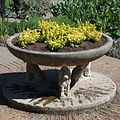


























































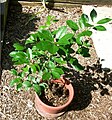












































































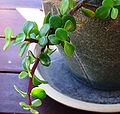



























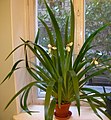
















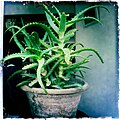




























































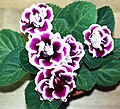











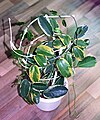







































You have observed very interesting details! ps nice internet site.
LikeLiked by 1 person
Hi Jailbreak,
You are welcome! I hope that you continue to find and learn something useful from the Potted Plant Society website. Happy Easter!
LikeLike
Thanks for all your valuable work on this site. Ellie take interest in participating in investigations and it’s obvious why. Many of us hear all relating to the compelling method you create both interesting and useful techniques on the website and even cause participation from other people on the area of interest while our own princess is actually starting to learn a lot of things. Have fun with the rest of the year. You’re the one conducting a brilliant job.
LikeLiked by 1 person
Hi moderowany,
I am delighted by your encouragement. Thank you for your kind words. There have been a lot more information and newly designed webpages being added to the Potted Plant Society website. Please enjoy and happy Easter to you and Ellie!
LikeLike
Тhis article іs genuinely а fastidious one it helps
nnew the web visitors, ωho are wishing fοr blogging.
LikeLiked by 1 person